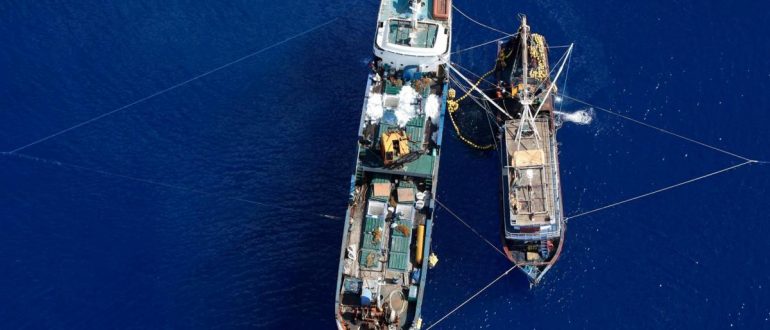
A Paris Agreement for the Oceans
The United Nations Convention on the Law of the Sea (UNCLOS III) has defined a comprehensive system of law and order in the world’s oceans since 1982, which sets forth the rules for the use of the oceans and their resources. From its earliest days, the convention based itself upon the idea that all marine problems are closely interlinked and need to be approached as a whole. Although the international convention is often referred to as the ‘Constitution of the Oceans’, UNCLOS primarily regulates the use and legal rights within the so-called primarily Exclusive Economic Zone (EEZ). However, the international waters of the high seas, which extend across 200 nautical miles (370.4 kilometres) and represent around two thirds of the oceans, lie beyond the jurisdiction of any individual country.
For this reason, there are limits to what can be done to protect the marine flora and fauna in this unregulated part of the world’s oceans. According to the UN, around 5.3 per cent of the entire marine area is protected, while only 0.25 per cent of the high seas is protected. This has now led to significant overfishing and severe pollution, as for instance large-scale trawling has resulted in the devastation of the sea floor for years to come and has depleted once-abundant fish stocks. But the international waters harbour more than just fish. Massive plankton populations not only serve as food for sea dwellers, but they also bind enormous amounts of carbon dioxide out of the air every year. The high seas absorb an estimated 1.5 billion tons of CO2 annually, which directly helps to regulate the global climate.
After more than ten years of debate, the UN General Assembly therefore voted on a resolution to convene a conference for an international treaty on the protection of marine biodiversity and the regulation of the high seas for the first time on 24 December 2017. Led by Mexico and New Zealand, the resolution was supported by 141 states – more than the required two-thirds majority. Over the next two years, an intergovernmental conference will negotiate a legally binding agreement under the current United Nations Convention on the Law of the Sea, to be signed by the member states at the end of 2020.
Such an agreement under international law would be the first convention ever to address the negative environmental impact of economic activities such as fishing and maritime traffic, and it could create a global system for the coordination of environmental protection and the sustainable use of the sea. Measures such as catch quotas for commercial fishing and scientific monitoring of fish stocks could be introduced. Furthermore, a ‘Paris Agreement for the Oceans’ inspired by the international convention on climate change could underpin efforts to create marine conservation areas in international waters, which could have a significant positive effect on climate change and the sustainable regeneration of fish stocks.
Although the recently launched negotiations send a strong signal for the conservation of the high seas, many challenges still stand in the way of the implementation. The actual scope of the convention and what it contains will only become apparent in 2020 at the earliest. Until then, the ten biggest fishing nations will also have to get on board; these include Iceland, Japan, Spain and South Korea, who are responsible for 71 per cent of the catch on the high seas. Moreover, the key to the success of the convention will be the effectiveness of its implementation. Only if the signatory nations are truly committed to applying the regulations consistently through measures such as improved satellite technology and better monitoring could this agreement really pave the way for a real Paris Agreement for the Oceans.
This article was published in February’s issue of the Diplomatic Magazine.
